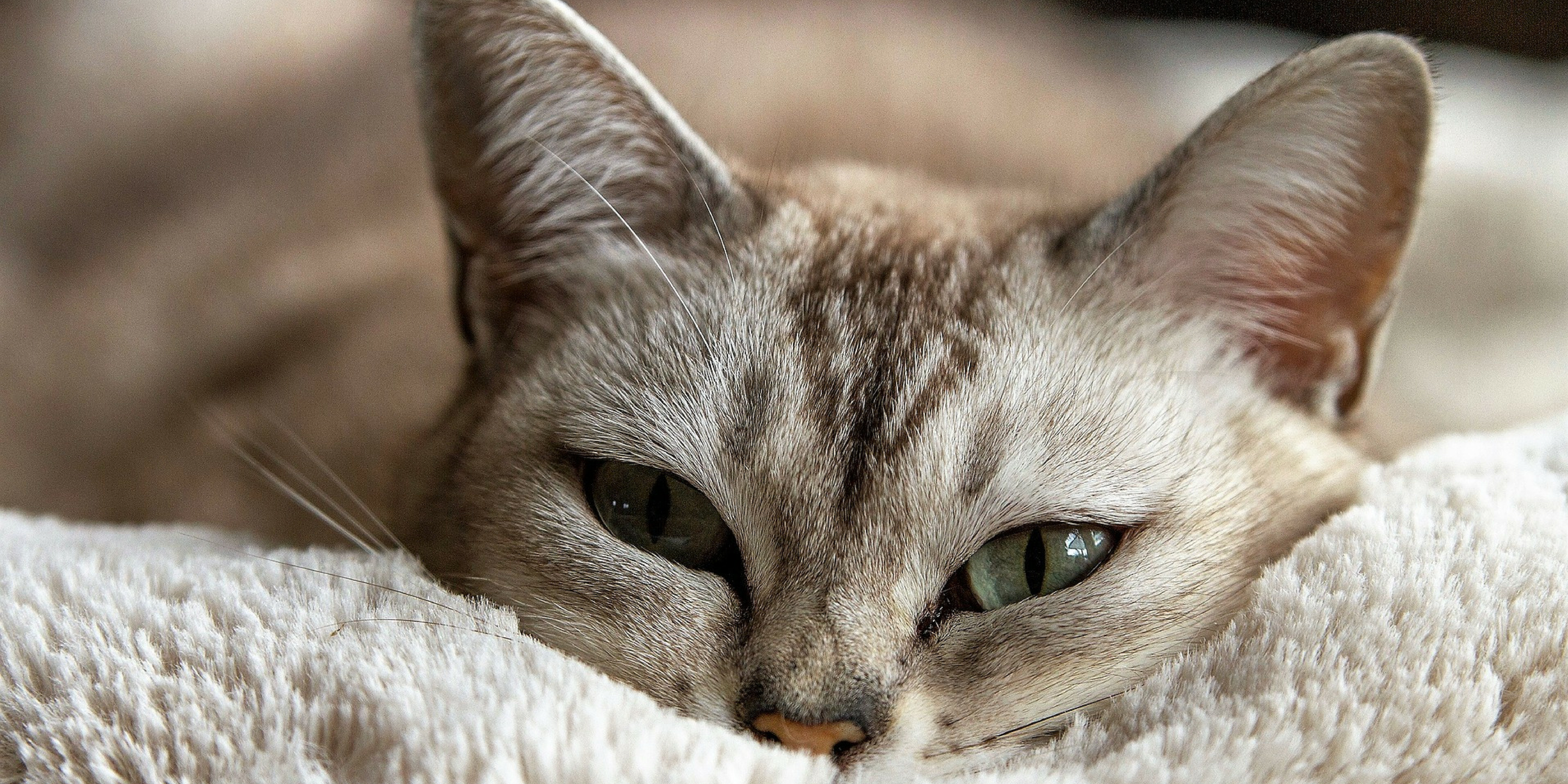You startle awake in the middle of the night to a familiar hacking sound. It’s your cat, expelling a hairball again—or is it?
As a cat owner, you are no stranger to the occasional hairball or vomiting episode, but if your feline friend is frequently coughing, wheezing, or gagging, don’t write it off. What may be overlooked as a normal cat behavior could actually be a sign of asthma.
What Is Feline Asthma?
Similar to human asthma, feline asthma refers to chronic inflammation of the lungs.
This type of inflammation is caused by “hyper-responsive” airways. The small breathing tubes in the airways, called bronchi, can react to a number of different stimuli, including:
- Inhaled debris or irritants, such as cigarette smoke, perfume, hairspray, air and carpet fresheners, or dust from cat litter and scented laundry detergent
- Environmental pollens or mold
- Infectious agents, such as viruses or bacteria
- Parasites, such as heartworms
Direct exposure to these irritants cause the airways to constrict or narrow, making it difficult for your cat to breathe. Muscle spasms in the bronchi and a buildup of mucus in the airways may also lead to episodes of coughing and wheezing.
During these attacks, your cat will assume a low, hunched position with his neck extended in an effort to clear the airway. This is often mistaken for an attempt to expel a hairball; however, it is important to note that these episodes are not productive.
 What Are the Signs?
What Are the Signs?
Feline asthma can be difficult to detect if you’re not sure what to look for. Common signs of asthma in cats include:
- Persistent coughing and/or wheezing
- Respiratory distress
- Squatting with the neck extended during coughing episodes
- Gagging or vomiting
- Open-mouth breathing
- Labored breathing after exercise
- Weakness and lethargy
How Is Feline Asthma Diagnosed?
Many of the signs of feline asthma can be caused by other illnesses, including heartworm disease and congestive heart failure. In order to rule out these conditions, your veterinarian will perform a complete physical exam, including an assessment of your pet’s heart and lungs, as well as a detailed history of your pet’s symptoms, health status, and lifestyle.
While there is no definitive test to detect asthma in cats, a number of diagnostic tools are used to correctly identify the problem, including:
- Lab work: Blood tests can provide helpful information about your cat’s overall health and rule out other potential causes of chronic bronchitis, such as infectious diseases and parasites.
- X-rays: Diagnostic images allow your veterinarian to observe characteristic changes in your cat’s lungs that indicate the presence of asthma, such as bronchial wall thickening.
- Bronchoscopy and cytology: This is an anesthetized procedure that allows your veterinarian to examine the airways with a small, flexible camera and collect samples for examination under a microscope.
- Airway lavage: This procedure involves collecting cells and mucous by “washing” the trachea with a small amount of saline. These samples are then cultured and examined under a microscope.
 How Is It Treated?
How Is It Treated?
While there is no cure for feline asthma, it can be easily managed. Treatments include:
- Corticosteroids: Inhaled steroids are used to decrease inflammation, dilate the airway, and decrease mucous production. For use in cats, inhalers are used in conjunction with an air chamber and face mask, such as the AeroKat system, to allow for more comfortable and effective administration.While this may seem like a daunting task initially, it is easy to get yourself and your cat into the habit with a little guidance and training from your veterinary team. The key is to start slow, be patient, and provide positive reinforcement. Alternatively, steroids may be given as a daily pill.
- Bronchodilators: Short-acting “rescue inhalers” allow for delivery of medication deep into the lungs during an asthma attack.
- Controlling the environment: Any factors known to aggravate breathing problems should be avoided. This may include trying different brands of cat litter or eliminating other irritants, such as air fresheners or cigarette smoke, from the home.
Bottom line: If you have a coughing cat, it is important to get him evaluated by a veterinarian as soon as possible. We’re here to help—contact us or schedule an appointment anytime!

